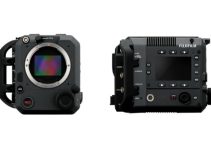We risked missing the airing of the Best Cinematographer of the year in this annual Academy Awards, but luckily this wasn’t the case. The Oscar ceremony confirmed one thing that all those who work in the field already know, and that’s the fact that the ARRI ALEXA is the ruling king of cine cameras, with a clear predominance over any other manufacturer, be it Sony, RED, or anyone else.
It is natural that everyone aspires to recreate that exquisite cinematic look, even with the much more affordable mirrorless cameras we have around. Here, you can check out MAURO’S FILMS workaround to get the famous ALEXA look on an A7 III.
Apparently, this workflow is based on the S-Log 2 profile that is found on the A7 III, but you can also use it for clips shot on any Sony camera that comes with it, like the previous A7 series and some A6000 series while keeping the standard in-camera settings along the way.
Once you’ve got your clips, you can import them in your editor of choice, although this particular workflow is specifically meant for Premiere Pro CC.
In the Lumetri Color tab of the software, you’ll see that the first option you get is for an input LUT. In the preloaded LUTs, there are some quite useful color space conversion presets, such as the Arri Default Log to Rec709 applied in the video. This profile will be a little bit too strong, especially in the highlights.
Since input LUTs cannot be dialed down when needed, you can do a little trick and export the look-up table of your choice so that you can apply it again in the creative tab while tweaking it as needed. To do the export, just click the Lumetri option tab, those three small horizontal lines near the name of the tab, and select “export .cube”.
At this point, you don’t need anymore the LUT in the input menu so you can remove it by selecting “none” in the dropdown menu, and move to the creative tab where you can apply it directly on the footage. Reducing the intensity to about 75% should eliminate the aforementioned problems in the highlights.
Furthermore, you can tweak a little bit exposure and highlights from the basic correction tab, decreasing them a little bit and maybe pulling up the shadows which can give you a tad of dynamic range more. Keep in mind, though, that the result will depend heavily on the way you shot the clips in the first place. The evergreen S-curve in the RGB curves tab can also add a layer of an extra punch to the final image.
Finally, you can tint shadows in blue and mid tones and highlights in the reddish-yellow and yellow-greenish side respectively. Even though it may not always be possible to match perfectly the images based on the kind of shots you’ve made, the suggested workflow can definitely give you a good starting point.
At the end of the day, color grading is a very subjective matter and depends a lot on various factors such as your style, the mood you’re going for, and your taste which will all influence the final result. Optionally, you can download the free LUT provided by Mauro and apply it directly in Premiere.
[source: MAURO’S FILMS]
Order Links:
Sony Alpha a7 III Mirrorless Digital Camera (Body Only) (B&H, Amazon)
Disclaimer: As an Amazon Associate partner and participant in B&H and Adorama Affiliate programmes, we earn a small comission from each purchase made through the affiliate links listed above at no additional cost to you.



